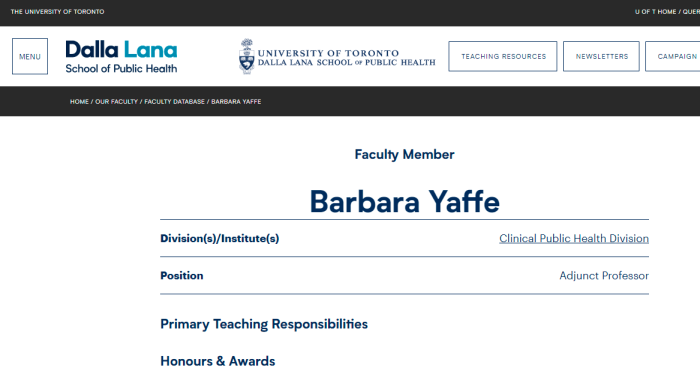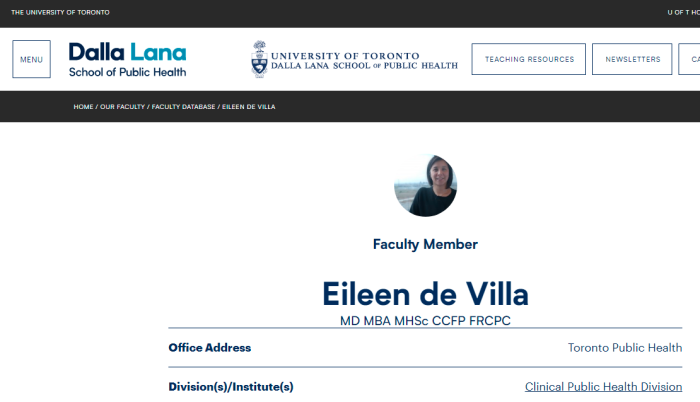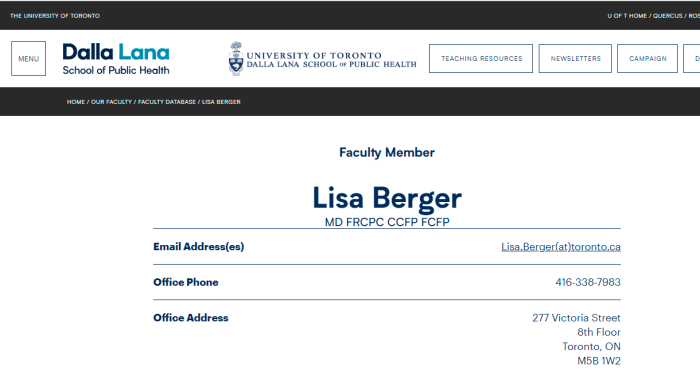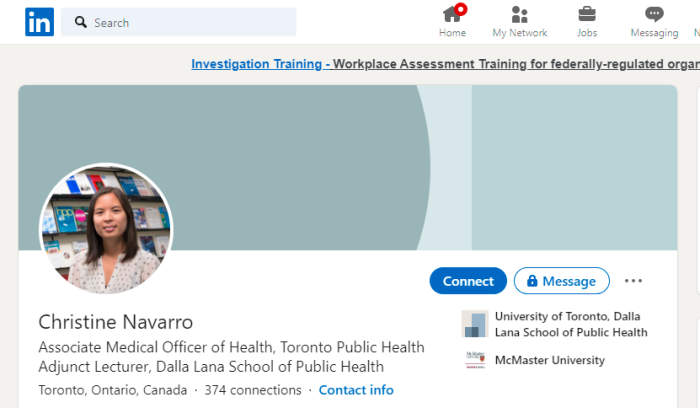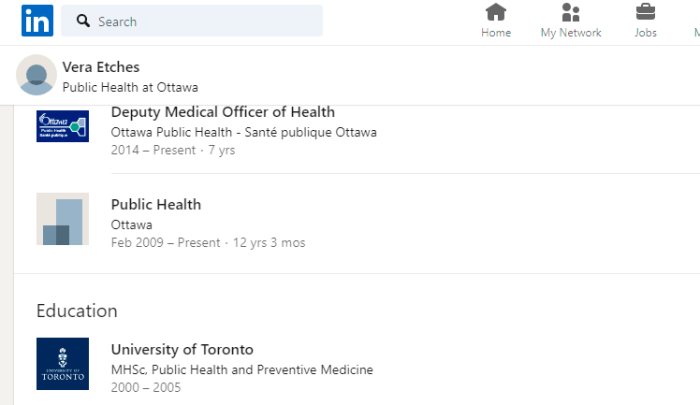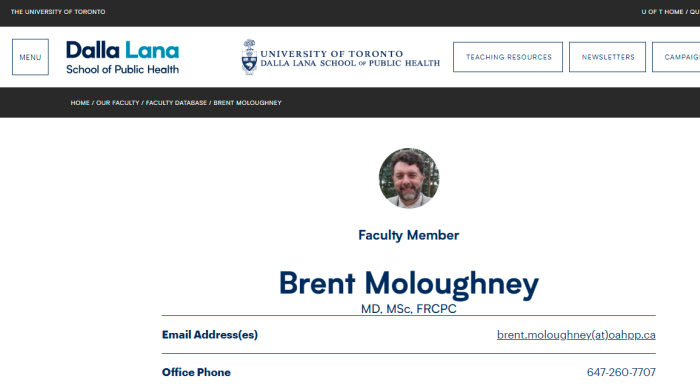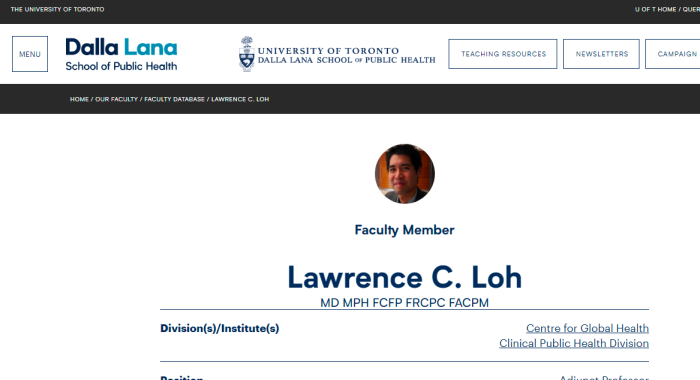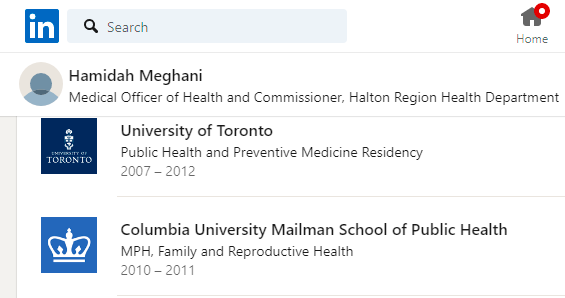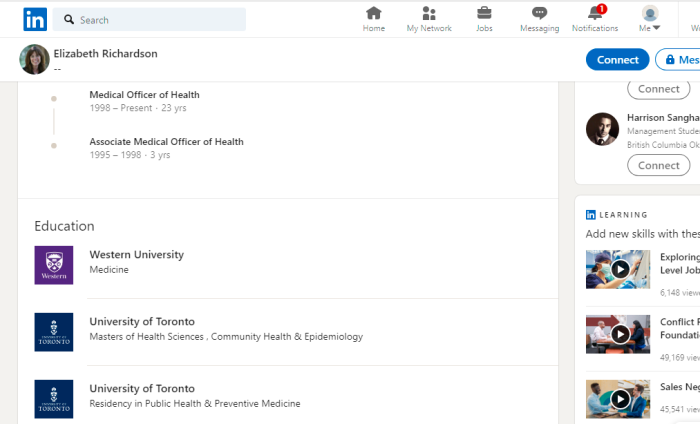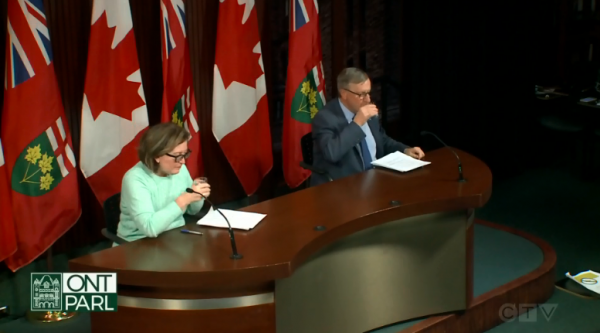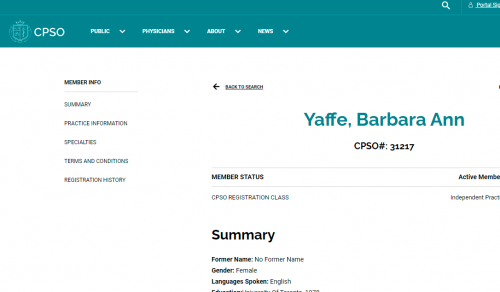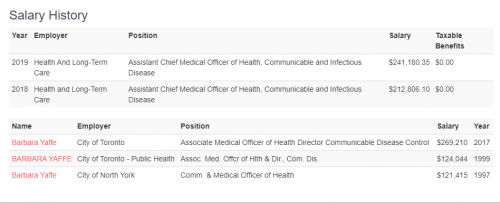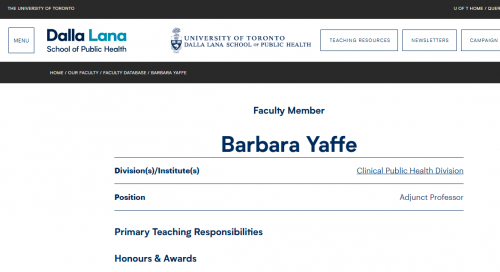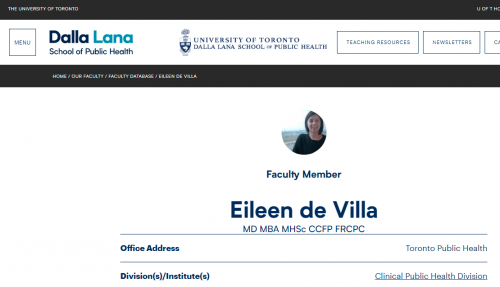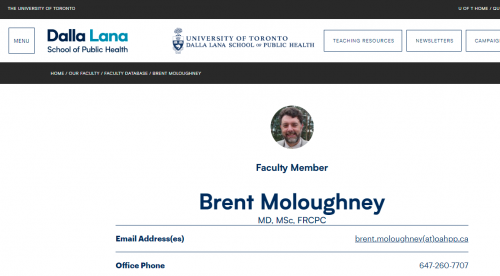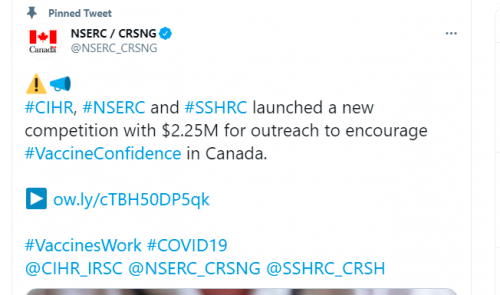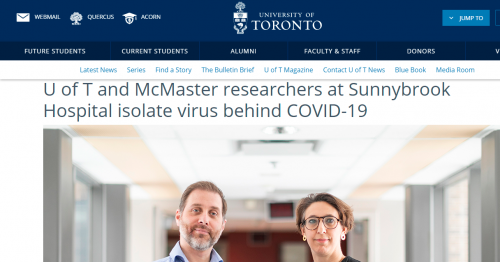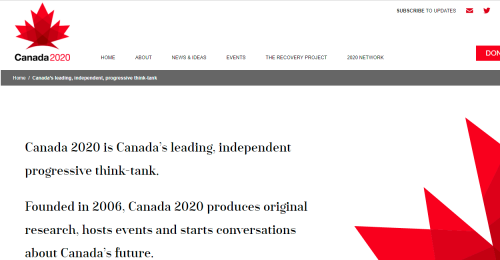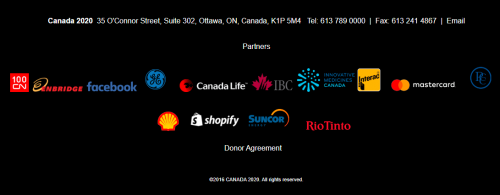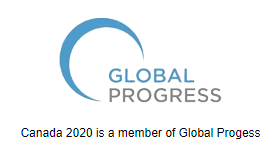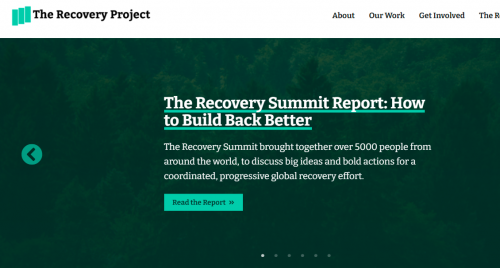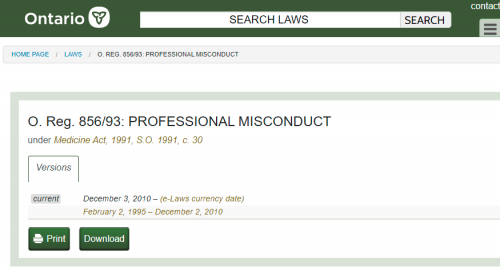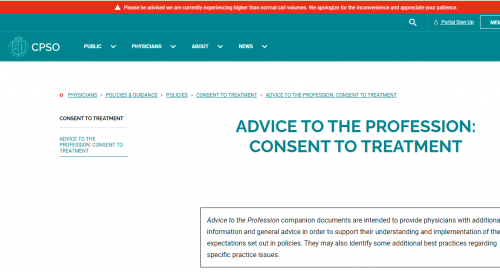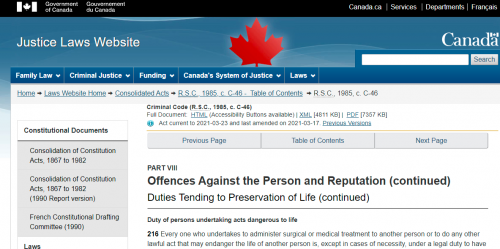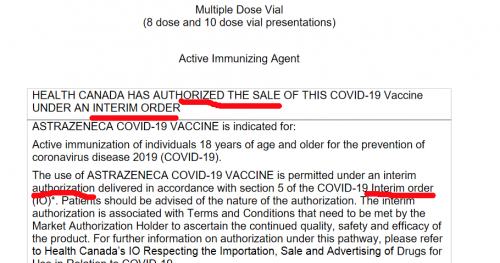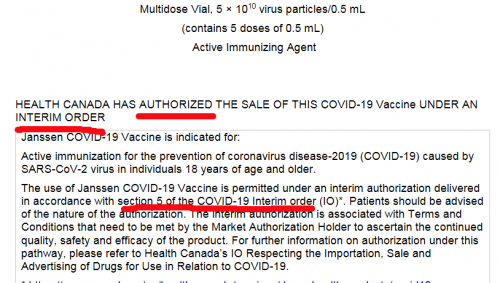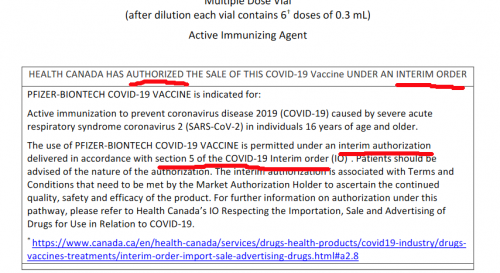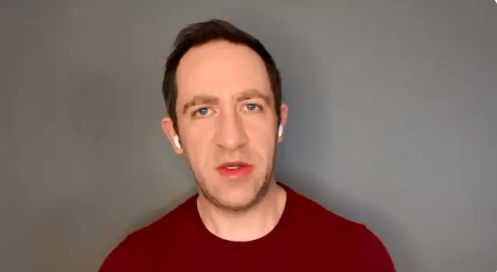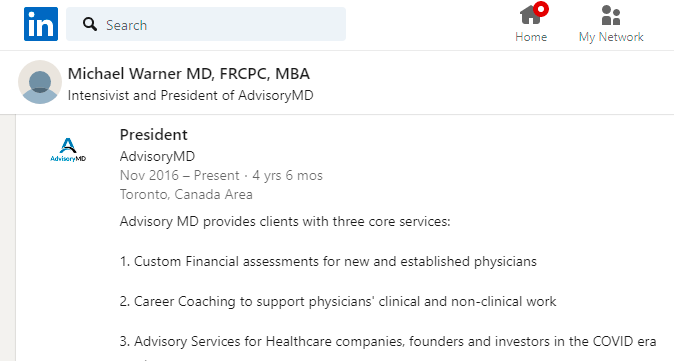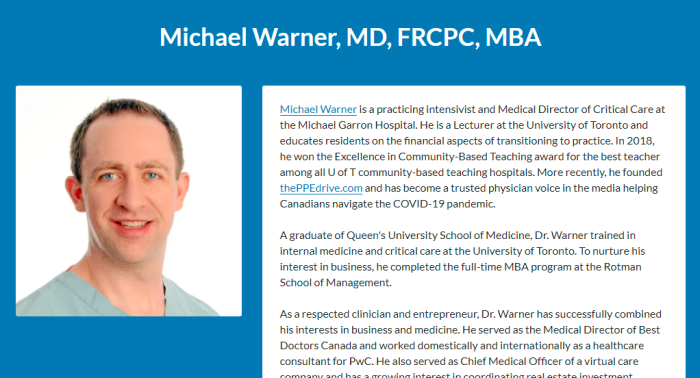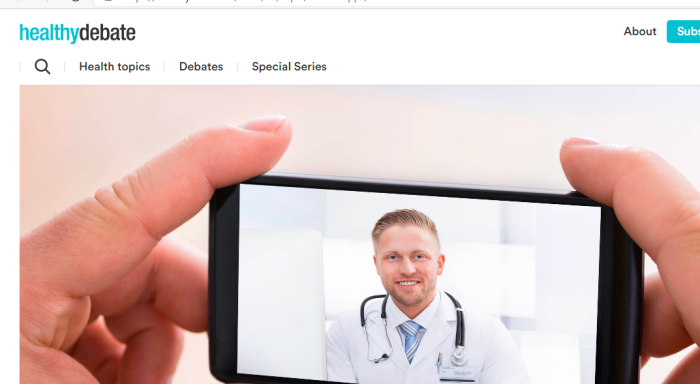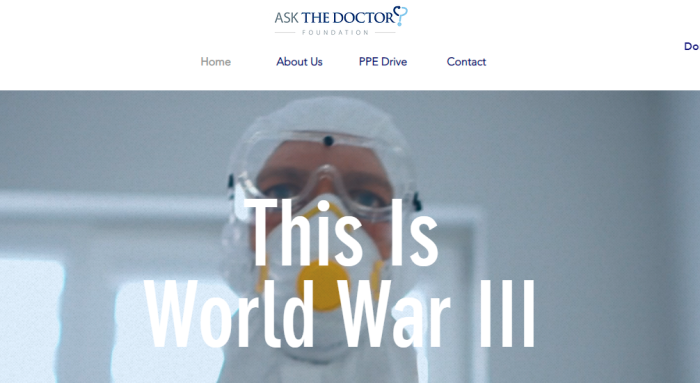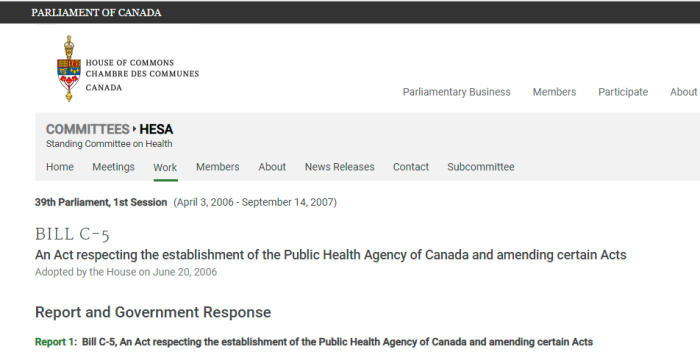

This will sound controversial, but PHAC, the Public Health Agency of Canada, is essentially a branch of the World Health Organization. It’s therefore logical that Theresa Tam (or whoever that person is), would actually hold dual roles.
From 2004 to 2006, there were a few significant developments in Canadian politics. The effects of which would finally be felt in 2020, with this fake “pandemic”.
(1) Creation of Public Health Agency of Canada by Order In Council
(2) International Health Regulations, 3rd Edition, Take Effect
(3) Passing of Quarantine Act, based on WHO-IHR
(4) Passing of PHAC Act, giving the Agency real teeth
These events are connected. The 2005 Quarantine Act is domestic implementation of the International Health Regulations. The Provincial Health Acts are derivatives of that. PHAC is a branch of WHO that masquerades as part of the Canadian Government. It was created to fulfill obligations under WHO-IHR.
Far from being a rogue administration, this was advanced by successive Liberal and Conservative Governments. Maybe one of the reasons the Canadian media spent so much time on the Paul Martin/Stephen Harper drama was to divert attention from what was really going on. It may also explain why Erin O’Toole is so blase about martial law being imposed these days.
1. Timeline: PHAC Act/Quarantine Act/IHR 3rd Ed
- Jan 23, 2004 – WHO decides to update IHR
- 2004 to 2005 – WHO begins process of creating IHR 3rd Edition
- Sept 23, 2004 – OIC 2004-1068, amend Financial Administration Act
- Sept 23, 2004 – OIC 2004-1070, amend PS Staff Relations Act
- Sept 23, 2004 – OIC 2004-1071, amend Public Service Employment Act
- Sept 23, 2004 – OIC 2004-1072/1073, amend Privacy Act
- Sept 23, 2004 – OIC 2004-1074/1075, amend Access To Info Act
- Sept 23, 2004 – OIC 2004-1076, amend CSIS Act
- Sept 23, 2004 – OIC 2004-1076, amend Auditor General Act
- Oct 8, 2004 – 1st Reading of Quarantine Act
- Oct 26, 2004 – 2nd Reading of Quarantine Act
- Oct 28, 2004 – Parliamentary Hearing of Quarantine Act
- Nov 4 2004 – Parliamentary Hearing of Quarantine Act
- Nov 18, 2004 – Parliamentary Hearing of Quarantine Act
- Nov 23, 2004 – Parliamentary Hearing of Quarantine Act
- Nov 25, 2004 – Parliamentary Hearing of Quarantine Act
- Dec 7, 2004 – Parliamentary Hearing of Quarantine Act
- Dec 7, 2004 – Parliamentary Hearing of Quarantine Act
- Dec 8, 2004 – Parliamentary Hearing of Quarantine Act
- Feb 10, 2005 – 3rd Reading of Quarantine Act
- Feb 10, 2005 – 1st Reading of Quarantine Act (Senate)
- Mar 9, 2005 – 2nd Reading of Quarantine Act (Senate)
- Apr 14, 2005 – 3rd Reading of Quarantine Act (Senate)
- May 13, 2005 – Royal Assent of Quarantine Act
- May 8, 2006 – 2nd Reading of PHAC Act Passed in HoC
- May 11, 2006 – Parliamentary Hearing on PHAC Act
- May 16, 2006 – Parliamentary Hearing on PHAC Act
- June 20, 2006 – 3rd Reading of PHAC Act Passed in HoC
- June 20, 2006 – 1st Reading of PHAC Act (Senate)
- June 28, 2006 – 2nd Reading of PHAC Act (Senate)
- Nov 3, 2006 – 3rd Reading of PHAC Act (Senate)
- Dec 12, 2006 – Royal Assent of PHAC Act
- Dec 15, 2006 – OIC 2006-1587, PHAC Act Active
2. PHAC Is Canada’s “Focal Point” For IHR

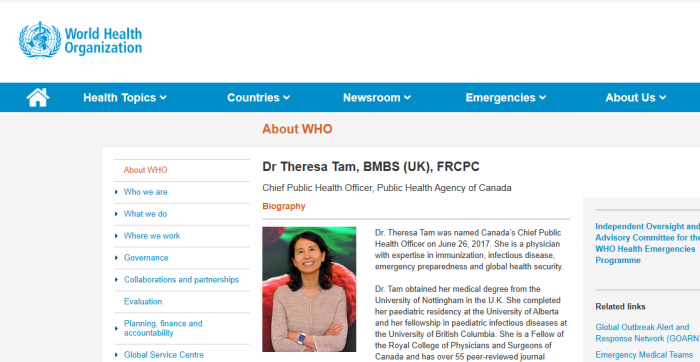
Article 4 Responsible authorities
1. Each State Party shall designate or establish a National IHR Focal Point and the authorities responsible within its respective jurisdiction for the implementation of health measures under these Regulations.
.
2. National IHR Focal Points shall be accessible at all times for communications with the WHO IHR Contact Points provided for in paragraph 3 of this Article. The functions of National IHR Focal Points shall include:
(a) sending to WHO IHR Contact Points, on behalf of the State Party concerned, urgent communications concerning the implementation of these Regulations, in particular under Articles 6 to 12; and
(b) disseminating information to, and consolidating input from, relevant sectors of the administration of the State Party concerned, including those responsible for surveillance and reporting, points of entry, public health services, clinics and hospitals and other government departments.
.
3. WHO shall designate IHR Contact Points, which shall be accessible at all times for communications with National IHR Focal Points. WHO IHR Contact Points shall send urgent communications concerning the implementation of these Regulations, in particular under Articles 6 to 12, to the National IHR Focal Point of the States Parties concerned. WHO IHR Contact Points may be designated by WHO at the headquarters or at the regional level of the Organization.
.
4. States Parties shall provide WHO with contact details of their National IHR Focal Point and WHO shall provide States Parties with contact details of WHO IHR Contact Points. These contact details shall be continuously updated and annually confirmed. WHO shall make available to all States Parties the contact details of National IHR Focal Points it receives pursuant to this Article.
IHR 3rd Edition Full Text 2005 (See highlighted version)
The 2005 Edition of the International Health Regulations specifies that each State Party (which is each country) shall establish a “focal point”. These points shall be responsible for implementing the Regulations, and answer to WHO.
And who is that focal point? The Public Health Agency of Canada. It was created specifically for the purpose of implementing WHO’s directives on global public health.
Who better to head PHAC than Theresa Tam? This person acted in a 2010 film supporting martial law, and already works for WHO anyway.
3. Timeline Of PHAC/IHR Implemented
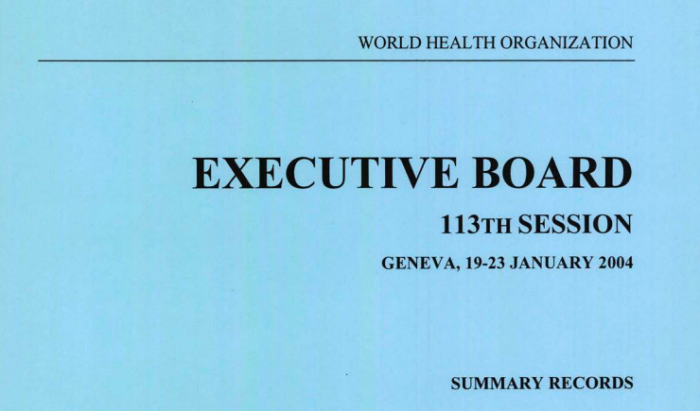

January 19 to 23, 2004, at the 113th Session of the Executive Board of the World Health Organization, it was decided that the International Health Regulations were to receive an updated edition. See here, here and the archive.
Mr AISTON (Canada) said that the International Health Regulations were a key component of Canada’s approach to the management and containment of communicable diseases, and also central to the role and function of WHO. The approach proposed was good: while a case could be made for accelerating the process, revision required careful consideration and the timetable put forward was therefore probably realistic. Having been a participant in the negotiations on the WHO Framework Convention on Tobacco Control, he suggested that the process should be concluded in one or two negotiating sessions at most. Canada was preparing a domestic approach to the revision of the International Health Regulations and would keep WHO informed of developments.
Page 41 starts to address proposed changes to the IHR, and states that it was widely supported by Member States. There seems to be no concern with just how much sovereignty is given up.
In fact, discussions for what changes to make to the International Health Regulations continued throughout 2004, and into 2005. That’s when things started to happen in Canada, although this was not discussed publicly.
In September 2004, a series of Orders In Council were signed to retroactively include the Public Health Agency of Canada into existing legislation. PHAC was also a recent creation that had not yet received any sort of legislative legitimacy. That would later change.
This is not some conspiracy theory. In fact, PHAC itself writes “was created in 2004 in response to growing concerns about the capacity of Canada’s public health system to anticipate and respond effectively to public health threats”. This is posted on its own website. It’s under the section titled WHY WAS THE AGENCY CREATED?
PHAC’s creation was in part of the larger Federal Strategy. Part of that (Pillar 3) promoted the idea of a Pan-Canadian Public Health Network. “Pan-Canadian” seems to be a euphemism for global.
October 8, 2004, just 2 weeks later, Bill C-12 was introduced into the House of Commons. This was the Quarantine Act, and was to be based on the World Health Organization’s regulations. By the end of October, it had passed Second Reading and was before the HESA Committee.
The November 4 hearing, the second hearing, is quite an interesting one. Below are quotes from the transcript of that session.
The Quarantine Act is passed in 2005, and the 3rd Edition of IHR took effect that year. In 2006, “Conservative” Prime Minister Stephen Harper brings in the PHAC Act, to give some legislative legitimacy to PHAC.
4. Bill C-12, Quarantine Act, IHR Implementation
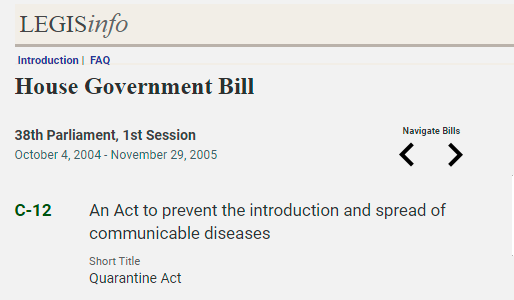
[Page 5]
Mr. Colin Carrie: I have a question about Canada’s quarantine laws. Are we in touch with the World Health Organization and other international organizations? If there’s an outbreak, can we have any influence on quarantining people in other areas, or vice versa, the sharing of information in that way?
.
Dr. Paul Gully: During an outbreak we certainly would communicate with the countries involved. During SARS we had close collaboration with the United States, the United Kingdom, and Australia, for example, as required, to share intelligence. In terms of utilization of their legislation, such as quarantine acts, we feel that our relationship with WHO, which is closer, and also clarification of WHO’s powers under the international health regulations will, I think, further ensure there is consistency in terms of response from individual member states as a result of that. Does that answer your question?
.
Mr. Colin Carrie: Yes.
Are you aware of international standards for quarantine?
.
Dr. Paul Gully: The international health regulations would be the regulations that individual states would then use to design their quarantine acts. I don’t know of any other standards out there or best practices to look at quarantine acts, but the IHRs really have been used over the years as the starting point. Now, with the improvement of the international health regulations, maybe, as is the case in Canada, changes will occur to quarantine acts in other countries in order to better comply with the international health regulations.
[Page 6]
The Chair: Madam Demers.
[Translation]
Ms. Nicole Demers (Laval, BQ): Madam Chair, my colleague made a reference earlier to international agreements. This is also one of my concerns. You will recall that the fundamental principle established at the First International Sanitary Conference in 1951 was to ensure maximum protection combined with a minimum number of restrictions. This principle still holds sway today. I’m certainly concerned about our future course of action.
[Page 8]
Mrs. Carol Skelton: Why did Health Canada proceed with a separate Quarantine Act at this time?
.
Dr. Paul Gully: Those of us who administered the Quarantine Act over the years always knew there were deficiencies in the old act, and because it was rarely used there wasn’t the inclination to update it. As a result of SARS and utilization of the act, which certainly put it under close scrutiny, and the requirement for the Government of
Canada to respond to the various reports on SARS, it was felt that updating the act sooner rather than later was appropriate. In addition, during discussions about the international health regulations of the World Health Organization, it was felt that it was appropriate to do it and to spend time and energy, which it obviously does require, to do it now, before other parts of legislative renewal, of which Mr. Simard is well aware, were further implemented or further discussion was carried out.
[Page 8]
Mrs. Carol Skelton: I would appreciate that, please. We talked at a previous committee meeting about the newly
created Public Health Agency of Canada. Bill C-12 gives authority to the Minister of Health, with no mention at all of the Chief Public Health Officer. Is there any connection between Bill C-12 and the Public Health Agency headed by our Chief Public Health Officer?
.
Dr. Paul Gully: The minister has the powers and can delegate those powers. The responsibility for the Quarantine Act is a responsibility of the Public Health Agency, which is headed by the Chief Public Health Officer. In effect, the Chief Public Health Officer has responsibility for the act under the minister, because there are certain powers, obviously, that the minister will delegate to the Chief Public Health Officer.
[Page 9]
Ms. Ruby Dhalla: I have one question. In terms of the Quarantine Act for our country, where are we at in terms of best practices models when we look at the international spectrum?
.
Dr. Paul Gully: I don’t know the acts in other countries, but because we are updating our act right now and we’re taking into account the probable revisions to the international health regulations, I believe we would be well in the forefront in terms of having modern legislation.
From the November 4, 2004 Parliamentary Hearings. Bill C-12, the 2005 Quarantine Act, was written as to accommodate anticipated changes in the International Health Regulations. As is spelled out, compliance is mandatory.
It also becomes clear that the newly created Public Health Agency of Canada (PHAC), will be responsible for carrying out actions in accordance with the Quarantine Act. Keep in mind, in 2004, PHAC had been created by Order In Council. There was no legislative basis for it yet.
5. Bill C-5: Public Health Agency Of Canada Act
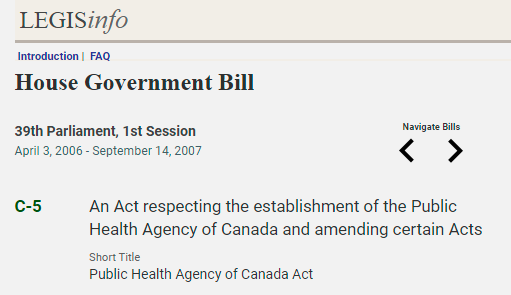
WHEREAS the Government of Canada wishes to take public health measures, including measures relating to health protection and promotion, population health assessment, health surveillance, disease and injury prevention, and public health emergency preparedness and response;
WHEREAS the Government of Canada wishes to foster collaboration within the field of public health and to coordinate federal policies and programs in the area of public health;
WHEREAS the Government of Canada wishes to promote cooperation and consultation in the field of public health with provincial and territorial governments;
WHEREAS the Government of Canada also wishes to foster cooperation in that field with foreign governments and international organizations, as well as other interested persons or organizations;
AND WHEREAS the Government of Canada considers that the creation of a public health agency for Canada and the appointment of a Chief Public Health Officer will contribute to federal efforts to identify and reduce public health risk factors and to support national readiness for public health threats;
PUBLIC HEALTH AGENCY OF CANADA
Establishment
3. The Public Health Agency of Canada is established for the purpose of assisting the Minister in exercising or performing the Minister’s powers, duties and functions in relation to public health.
Qualifications required
(2) The Chief Public Health Officer shall be a health professional who has qualifications in the field of public health.
Lead health professional
7. (1) The Chief Public Health Officer is the lead health professional of the Government of Canada in relation to public health.
Communication with governments, public health authorities and organizations
(2) The Chief Public Health Officer may, with respect to public health issues, communicate with governments, public health author-ities or organizations in the public health field, within Canada or internationally.
Communication with the public, voluntary organizations and the private sector
(3) The Chief Public Health Officer may communicate with the public, voluntary organizations in the public health field or the private sector for the purpose of providing information, or seeking their views, about public health issues.
PHAC was created for the purpose of promoting public health, and it serves as a required “focal point” for Canada to fulfill its obligations under the International Health Regulations and the Quarantine Act.
Having Theresa Tam as both the Public Health Officer of Canada and working for the World Health Organization actually makes sense. PHAC effectively acts as a branch of WHO.
PHAC exists to serve a UN function.
6. Government Openly Admits PHAC Is WHO Outpost

How Canada meets its obligations under the IHR
As a signatory to the IHR, Canada is committed to help strengthen global health security. We build capacities to detect, assess, report and respond to public health events here at home and abroad.
Canada has confirmed its ability to meet these public health core capacity requirements under the IHR through the following activities: (a) monitoring and evaluation (such as the Joint External Evaluation (JEE) process)
real-life events; (b) emergency preparedness and response exercises; and (c) Collaboration efforts between federal departments and with provincial and territorial partners improve and strengthen our country’s public health preparedness and response system.
Canada has also established a National IHR Focal Point (NFP), which is required under IHR Article 4 (Responsible authorities). The NFP supports IHR-related communications between Canadian public health authorities, WHO, its regional office in the Americas (care of the Pan American Health Organization (PAHO)) and other countries.
Implementing the IHR in Canada
In Canada, the Public Health Agency of Canada (PHAC) is the lead organization for implementing the IHR. PHAC is also Canada’s designated National IHR Focal Point (NFP). As the NFP, PHAC coordinates the implementation of the IHR on behalf of the Government of Canada.
IHR activities are a shared responsibility. This means that Canada’s Health Portfolio, other federal departments and provincial/territorial governments support IHR implementation.
Canada implements the IHR under existing legislation, regulations, policies and agreements in place at both the federal and provincial/territorial levels.
The success of IHR implementation in Canada relies on ongoing collaboration by all partners to carry out surveillance, reporting, notification, verification, response and collaboration activities: (a) across the country and (b) at international points of entry (airports, ports and ground crossings)
Because legislation differs among federal and provincial/territorial governments, Canada has mechanisms, agreements and plans in place that enable national coordination. This is particularly important during public health emergencies that require federal involvement.
It’s hardly a conspiracy theory when Ottawa openly admits that PHAC serves as the “focal point” for WHO, and to implement the International Health Regulations.
PREVIOUS CANUCK LAW POSTS
(1) WHO International Health Regulations Legally Binding
(2) A Look At International Health Regulation Statements
(3) Quarantine Act Actually Written By WHO, IHR Changes
(4) Provincial Health Acts Domestic Implementation Of WHO-IHR
(5) Provincial Health Acts Domestic Implementation Of WHO-IHR, Part II
(6) World Health Treaty Proposed, Based On WHO-IHR
WHO/INTERNATIONAL HEALTH REGULATIONS
(1) 113th Session Of World Health Org Executive, January 2004
(2) 113th Session World Health Organization Jaunary 2004
(3) https://apps.who.int/gb/ghs/pdf/A_IHR_IGWG_1-en.pdf
(4) WHO September 2 2004 IHR Meeting
(5) https://apps.who.int/gb/ghs/e/e-igwg.html
(6) https://archive.is/kexzW
(7) https://www.canada.ca/en/public-health/corporate/mandate/about-agency/history.html
(8) https://www.canada.ca/en/public-health/corporate/mandate/about-agency/federal-strategy.html
(9) WHO 113th Session Revise The IHR
(10) WHO IHR 3rd Edition Full Text 2005 MARKED
PUBLIC HEALTH AGENCY OF CANADA ACT (BILL C-5)
(1) https://orders-in-council.canada.ca/
(2) https://openparliament.ca/bills/39-1/C-5/?page=2
(3) https://www.parl.ca/LegisInfo/BillDetails.aspx?Language=E&billId=2162144&View=5
(4) https://parl.ca/DocumentViewer/en/39-1/bill/C-5/first-reading
(5) HESA Committee Study On Bill C-5
(6) May 11 2006 HESA Transcript PHAC Act
(7) May 16 2006 HESA Transcript PHAC Act
QUARANTINE ACT (BILL C-12)
(1) https://www.parl.ca/LegisInfo/BillDetails.aspx?Language=E&billId=1395913
(2) https://www.ourcommons.ca/Committees/en/HESA/StudyActivity?studyActivityId=981075
(3) https://www.ourcommons.ca/DocumentViewer/en/38-1/HESA/report-2/
(4) Canada Quarantine Act Oct 28 Hearing
(5) Canada Quarantine Act Nov 4 Hearing
(6) Canada Quarantine Act Nov 18 Hearing
(7) Canada Quarantine Act Nov 23 Hearing
(8) Canada Quarantine Act Nov 25 Hearing
(9) Canada Quarantine Act Dec 7 First Hearing
(10) Canada Quarantine Act Dec 7 Second Hearing
(11) Canada Quarantine Act Dec 8 Hearing


